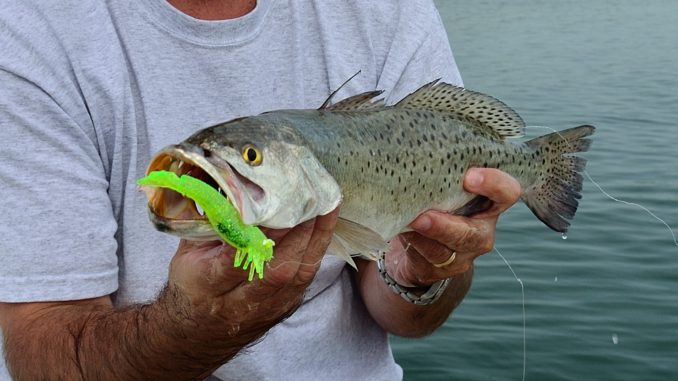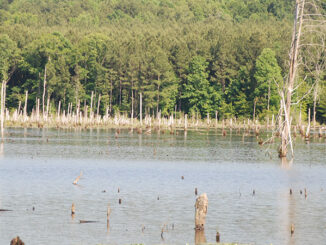
Everything living in or out of the water loves the sweet taste of shrimp, and speckled trout, redfish and flounder can’t let one of these scrumptious critters pass by without trying to make a snack out of it. While a full bucket of live shrimp is tough to beat, an angler who can retrieve an artificial shrimp the correct way will start repurposing their live shrimp for a big pot of Lowcountry boil.
For more than 20 years, artificial shrimp have been available. From hard-sided, suspending versions to the soft, sinking varieties, dozens of lure manufacturers produce a fake shrimp option, but all imitations are not created equal; some will produce more bites much more effectively than others.
Mark Nichols of D.O.A. Lures was one of the first to develop a soft-plastic shrimp with a real, lifelike action, and his D.O.A. shrimp is still one of the best options available to anglers. After that ingenious creation, the rest of the fishing industry stepped up to the plate and started to produce soft-bodied shrimp imitations that also catch fish — but some come with a learning curve.
Guide Ricky Kellum of Jacksonville, N.C., has caught speckled trout on artificials for 30 years, from the original Berkley Powerbait shrimp to the D.O.A. to Betts’ Perfect Sinker Shrimp. His technique for fishing shrimp baits is simple but effective.
“Most people fish the lure too fast and don’t pop it right,” he said. “It’s easy to fish, but there is definitely a technique you have to learn to get bit.”
Kellum will make a cast either directly upcurrent or upcurrent at an angle to allow the lure to sink all the way to the bottom.
“Knowing the water depth is critical, because you need to be fishing it near the bottom,” he said.
As soon as the line stops, he takes out the slack, and pops it twice.
“I make two short jabs and then let it fall again. The fish are going to hit it on the drop 90 percent of the time, so it is important to keep tension on the line on the fall and then wait for the fish to eat it,” he said.
Fortunately, a bite from any one of the inshore slam species — flounder, trout, and redfish — is going to be in one fluid motion, because they inhale their food in one single gulp.
“As soon as you feel them thump it, set the hook and hang on,” Kellum said.
Occasionally, anglers will hook up on a fish without using the proper technique, but following the right recipe will put many more fish in the boat.





Be the first to comment